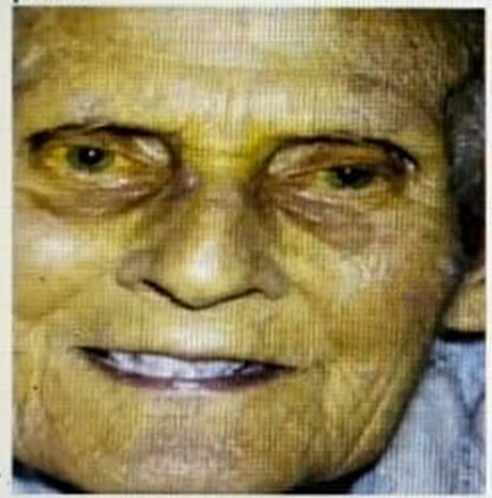A 75-year-old male who is a chronic alcoholic present to the medical office for his annual wellness visit. How would describe the findings found in photo?

Acanthosis Nigricans
Cyanosis
Jaundice
Carotenemia
The Correct Answer is C
A. Acanthosis Nigricans:
Acanthosis nigricans is characterized by dark, velvety patches of skin, often found in body folds such as the neck, armpits, and groin. It does not present as the yellow discoloration seen in the photo.
B. Cyanosis:
Cyanosis is a bluish discoloration of the skin and mucous membranes due to inadequate oxygenation of the blood. The image shows yellow discoloration, not the blue tint associated with cyanosis.
C. Jaundice:
Jaundice is indicated by a yellowish tint to the skin and sclera due to elevated bilirubin levels, commonly associated with liver dysfunction. The photo clearly shows this yellow discoloration, consistent with jaundice, often seen in chronic alcoholics with liver disease.
D. Carotenemia:
Carotenemia presents as a yellow-orange discoloration of the skin, especially on the palms and soles, due to high levels of carotene in the blood. It does not typically affect the sclera, which differentiates it from jaundice. The uniform yellowing of the skin and eyes in the photo aligns more with jaundice.
Nursing Test Bank
Naxlex Comprehensive Predictor Exams
Related Questions
Correct Answer is C
Explanation
A. To prevent further dehydration:
While preventing dehydration is important, it is not the primary reason for bringing a cup of water when assessing the thyroid gland. Dehydration is addressed through overall fluid management rather than during a specific thyroid exam.
B. To assist the client to feel more comfortable:
Providing comfort is essential, but bringing a cup of water specifically for comfort during a thyroid exam is not typically necessary. The primary focus of the water in this context is related to the assessment process.
C. To observe the movement of the thyroid gland:
Observing the movement of the thyroid gland during swallowing can help the nurse assess for abnormalities. Having the client drink water allows the nurse to observe the thyroid gland's movement, which can indicate the presence of goiters, nodules, or other irregularities.
D. To promote the nurse-client relationship:
Promoting a good nurse-client relationship is always beneficial, but bringing a cup of water for this specific purpose is not relevant to the physical assessment of the thyroid gland. The water's main purpose is to facilitate the physical examination process.
Correct Answer is C
Explanation
The Body Mass Index (BMI) is calculated using the formula:
BMI = weight(kg) / height(m)2
First, we need to convert the height from feet and inches to meters.
There are approximately 0.3048 meters in a foot and 0.0254 meters in an inch.
So, 5 feet 5 inches is approximately 1.65 meters.
Substituting the given values into the formula:
BMI = 60 / (1.65)2
This gives us a BMI of approximately 22 when rounded to the nearest whole number.
Therefore, the correct answer is 22 BMI.
Whether you are a student looking to ace your exams or a practicing nurse seeking to enhance your expertise , our nursing education contents will empower you with the confidence and competence to make a difference in the lives of patients and become a respected leader in the healthcare field.
Visit Naxlex, invest in your future and unlock endless possibilities with our unparalleled nursing education contents today
Report Wrong Answer on the Current Question
Do you disagree with the answer? If yes, what is your expected answer? Explain.
Kindly be descriptive with the issue you are facing.
